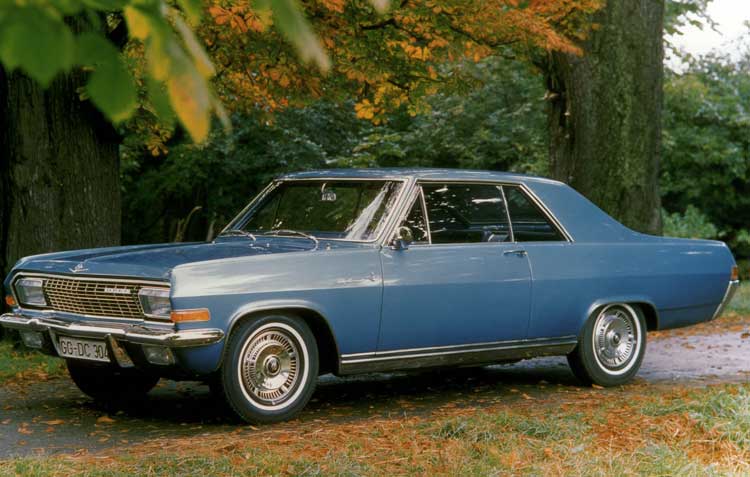The Opel Diplomat
Opel ranks highly in the diplomatic corps

At this year's Geneva motor show, the German car-maker Erich Bitter showed off his stylish new coupe, the Bitter CD. That car - for the time being at least - is a one-off, but it contains a lot of mass-produced General Motors components since it is based on the well-regarded Holden Monaro with its beefy Chevrolet V8 engine.
At this year's Geneva motor show, the German car-maker Erich Bitter showed off his stylish new coupe, the Bitter CD. That car - for the time being at least - is a one-off, but it contains a lot of mass-produced General Motors components since it is based on the well-regarded Holden Monaro with its beefy Chevrolet V8 engine.
With the new model, Herr Bitter is following a recipe that has worked for him before. In 1974, he launched his Bitter Diplomat CD. That, too, was based on a GM donor car with impressive mechanicals and a big Chevrolet V8. But back in the 1970s, Bitter didn't have to go all the way to Australia to find something suitable - it was available on his doorstep. The model he adopted was the 1969 Opel Diplomat V8, the most imposing European volume-badged car ever built, except for, perhaps, the far less attractive Ford Zodiac Mk IV.
Actually, the Diplomat V8, with its 5.3 litres and 230bhp, was just the priciest version of a whole range of big Opels that shared the same huge body-shell. Lesser Diplomats made do with Opel's 2.8 litre six cylinder engine, and were badged Diplomat E. Two further models based on the same bodywork, the Kapitän and the Admiral had horizontally arranged rectangular headlamps, rather than the vertically stacked units of the Diplomats, and more basic trim. The Kapitän and the Admiral made do with carburettor-fed versions of the Opel six, while the Diplomat E got fuel injection.
Not for Opel in those days, you will notice, inoffensively meaningless, politically correct model names like Meriva and Vectra. Badges such as Admiral were warlike, masculine and let you know precisely where you fitted in to a rather rigid hierarchy. If you owned a Kadett, you knew your lowly place in the pecking order - and if they'd had the tiny Agila then, it would probably have been the Opel Cabin Boy.
Despite their rank-based differences in engines and styling, however, the big Diplomats, Admirals and Kapitäns all shared the same fancy De Dion rear axle, with self-levelling suspension available as an option. Also optional, at least on the cheaper models, was power steering. Customers who forgot to tick that particular box on the order form ended up with manual steering, geared down to give a whopping five turns of the wheel between locks. That can't have been much fun.
When it appeared, the 1969 Diplomat was actually an inch or two larger in every direction than the S-Class. Only with the W116 of 1972 did Mercedes catch up, which begs the question of whether the S-class really had anything that the Diplomat did not. Apart from the three-pointed star on the bonnet, perhaps not much - but that badge was decisive. While the Diplomat faded away in 1977, the S-Class went from strength to strength, with new generations of Mercedes's range-topper being launched in 1979, 1991 and 1998.
Opel did introduce a new top model, the Senator, but that was half a size smaller. When the second-generation Senator came to the end of the road in the 1990s, it too was not replaced, leaving the smaller Omega as Opel's biggest car. Now the Omega, the last rear-wheel-drive Opel saloon, and therefore the last link with the Diplomat, has gone as well. Other volume makers have found it just as difficult to shift big cars without posh badges: Ford has abandoned the Granada, while Peugeot and Renault struggle on with the 607 and Vel Satis. Only Volkswagen, with its Phaeton, an expensive car with a mass-market badge, produces something truly comparable to the big 1970s Opels. And how is that doing? Let's just be Diplomatic and say that, in the light of sluggish sales, VW may be putting the Phaeton project down to Bitter experience.
Join our commenting forum
Join thought-provoking conversations, follow other Independent readers and see their replies
Comments
Bookmark popover
Removed from bookmarks